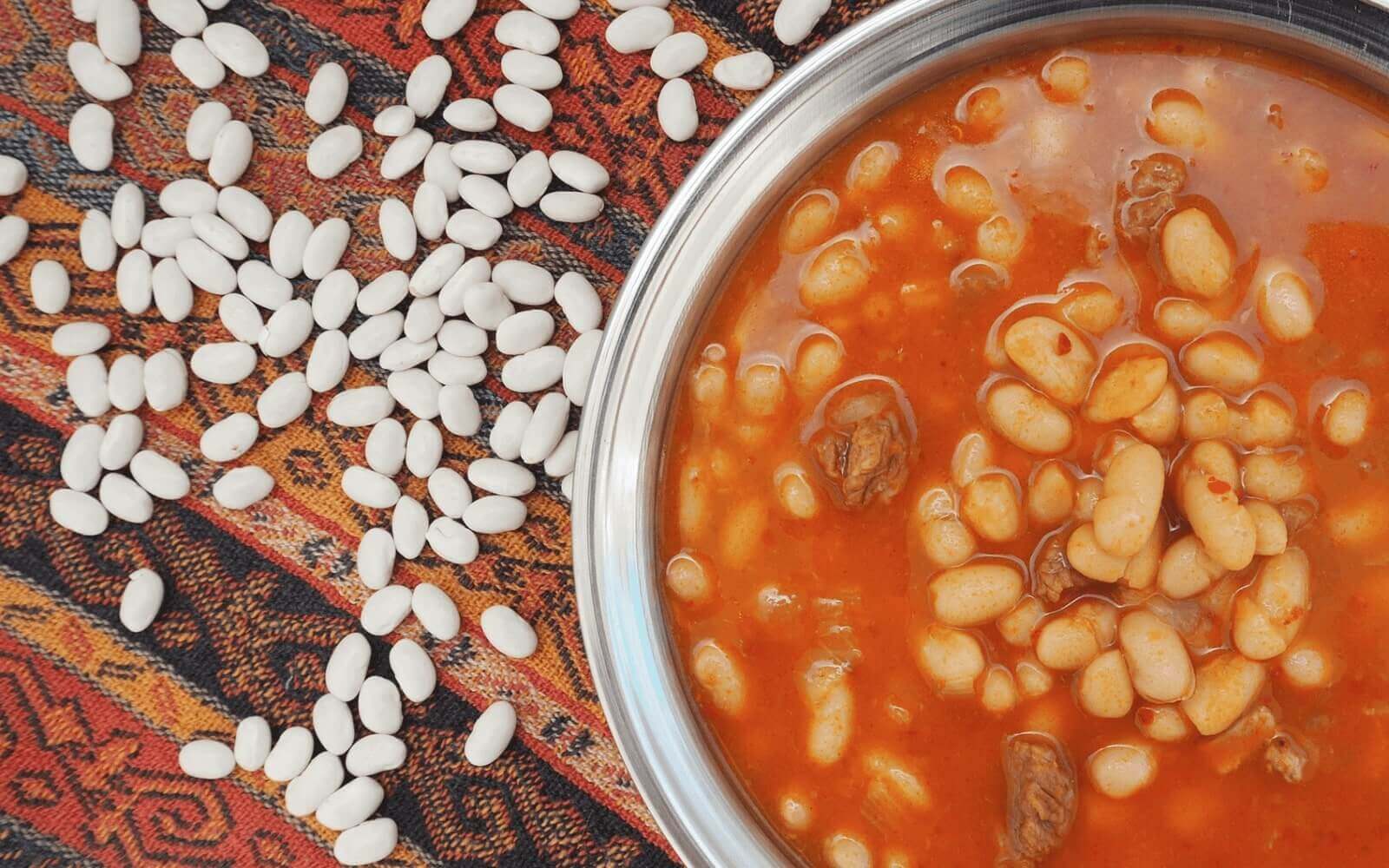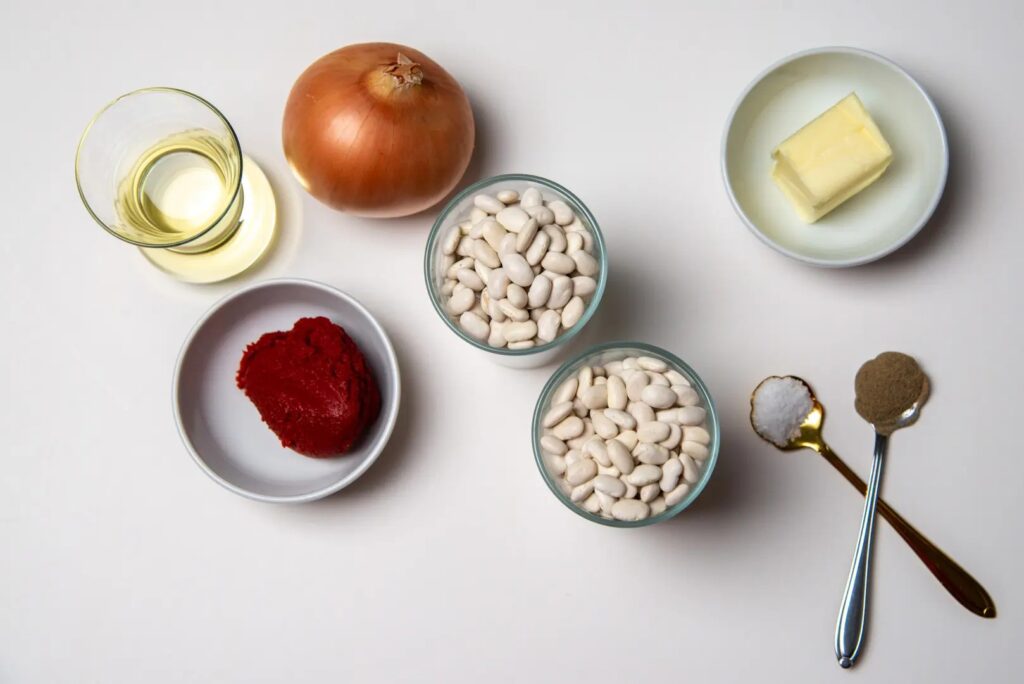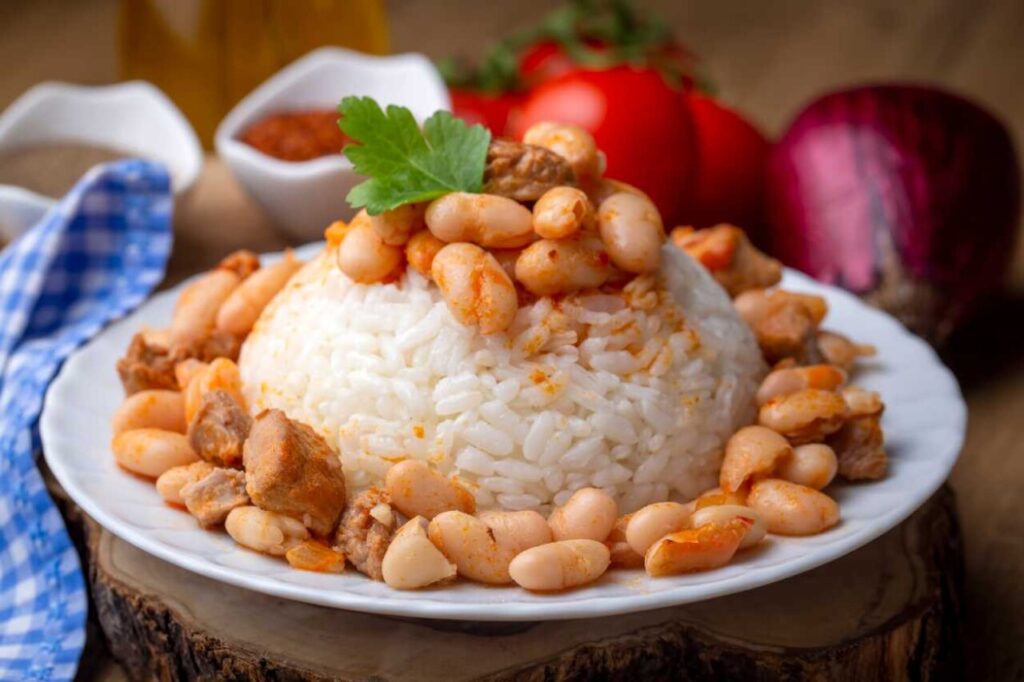Dry bean recipe are a staple in many cuisines around the world, providing not only a rich flavor but also a nutritious and hearty base for a variety of dishes.
This dry bean recipe guide will walk you through traditional ingredients, tips for achieving the perfect texture, different variations you can try at home, and what to serve with your beans to make a complete meal.
Plus, we’ll cover some common mistakes that can affect the flavor and consistency of your beans.
Dry Bean Recipe: Traditional Ingredients And Prep Tips
To prepare a delicious dry bean recipe, using the right ingredients and preparation techniques is key. Here’s a traditional dry bean recipe you can follow:
Ingredients:
-
2 cups of dry beans (kidney beans, pinto beans, navy beans, etc.)
-
1 medium onion, finely chopped
-
2 tablespoons olive oil or vegetable oil
-
2 cloves of garlic, minced
-
1-2 tomatoes (or 2 tablespoons of tomato paste)
-
1 teaspoon cumin
-
Salt and pepper to taste
-
4 cups of water or vegetable broth
Preparation Tips:
-
Soaking the Beans: Before cooking, soak your dry beans for at least 6 hours or overnight to help soften them and reduce cooking time.
-
Cooking Aromatics: In a large pot, heat oil and sauté the chopped onion and garlic until golden. Then, add the tomatoes (or paste), followed by cumin, salt, and pepper. Let them cook for a few minutes.
-
Adding Beans: Drain the soaked beans and add them to the pot. Pour in the water or broth, then bring the mixture to a boil before reducing the heat to a simmer.
-
Cooking: Let the beans cook for 1-2 hours, or until they reach a soft and tender consistency.
How To Achieve Perfect Texture When Cooking Beans
One of the most common challenges in making a dry bean recipe is getting the right texture. Here are some tips to help you achieve perfectly cooked beans:
Soaking Beans Properly:
-
Soaking beans helps to soften them and reduce the cooking time. Don’t skip this step if you want a creamy texture and evenly cooked beans.
The Right Cooking Method:
-
If you’re using a stovetop, simmer the beans on low heat to avoid breaking them apart. You can also use a pressure cooker, which will cut cooking time in half.
-
Keep checking the beans during cooking to ensure they don’t overcook. You want them tender but not mushy.
Avoid Overcrowding:
-
Be sure to leave enough room in the pot for the beans to cook evenly. If you overcrowd the pot, the beans may not cook properly.
Dry Bean Recipe Variations You Should Try At Home
There are many ways to customize a dry bean recipe depending on your preferences. Below are a few variations you can try at home:
1. Meat-Based Dry Bean Recipe:
-
Adding meat to your dry bean recipe gives it a rich flavor. You can include sausage, ground beef, or chicken to make the beans heartier and more satisfying.
2. Vegetarian Dry Bean Recipe:
-
For a lighter, vegetarian version, use zeytinyağlı kuru fasulye (olive oil and beans) or add in a variety of vegetables such as carrots, celery, and spinach. You can also make a delicious vegetable broth for added depth.
3. Spicy Dry Bean Recipe:
-
If you prefer a spicier flavor, add jalapeños, chili powder, or cayenne pepper to your dry bean recipe. This will give your dish an extra kick.
4. Mediterranean Dry Bean Recipe:
-
For a Mediterranean twist, try adding olives, feta cheese, and fresh herbs like rosemary or thyme. This variation will give your beans a fresh, vibrant flavor.
What To Serve With Dry Beans For A Complete Meal
Dry beans are hearty and filling, but they’re even better when paired with the right sides. Here are some great ideas for what to serve alongside your dry beans:
1. Rice or Pilaf:
-
Rice is a classic accompaniment to beans. You can pair your dry beans with plain white rice or a flavorful pilaf made with garlic and onions.
2. Fresh Bread:
-
A crusty loaf of bread, such as sourdough, is perfect for soaking up the delicious bean juices.
3. Salad:
-
A fresh salad with greens, tomatoes, cucumbers, and a tangy vinaigrette makes a great, refreshing contrast to the richness of the beans.
Dry Bean Recipe Mistakes That Affect Flavor And Consistency
While making dry beans may seem simple, there are common mistakes that can affect the final result. Here’s what to avoid:
1. Not Soaking the Beans:
-
If you skip soaking the beans, they will take much longer to cook and may not soften evenly. Always soak the beans for at least 6 hours or overnight.
2. Adding Salt Too Early:
-
Adding salt too early can toughen the beans, so be sure to add it toward the end of the cooking process once the beans are tender.
3. Using Old Beans:
-
Old dry beans may not cook properly, even with soaking. Always check the age of your beans before cooking to ensure they will soften properly.
4. Overcooking or Undercooking:
-
Keep an eye on the beans as they cook. Overcooking will make them mushy, while undercooking will leave them tough.
See you in the next post,
Anil UZUN


